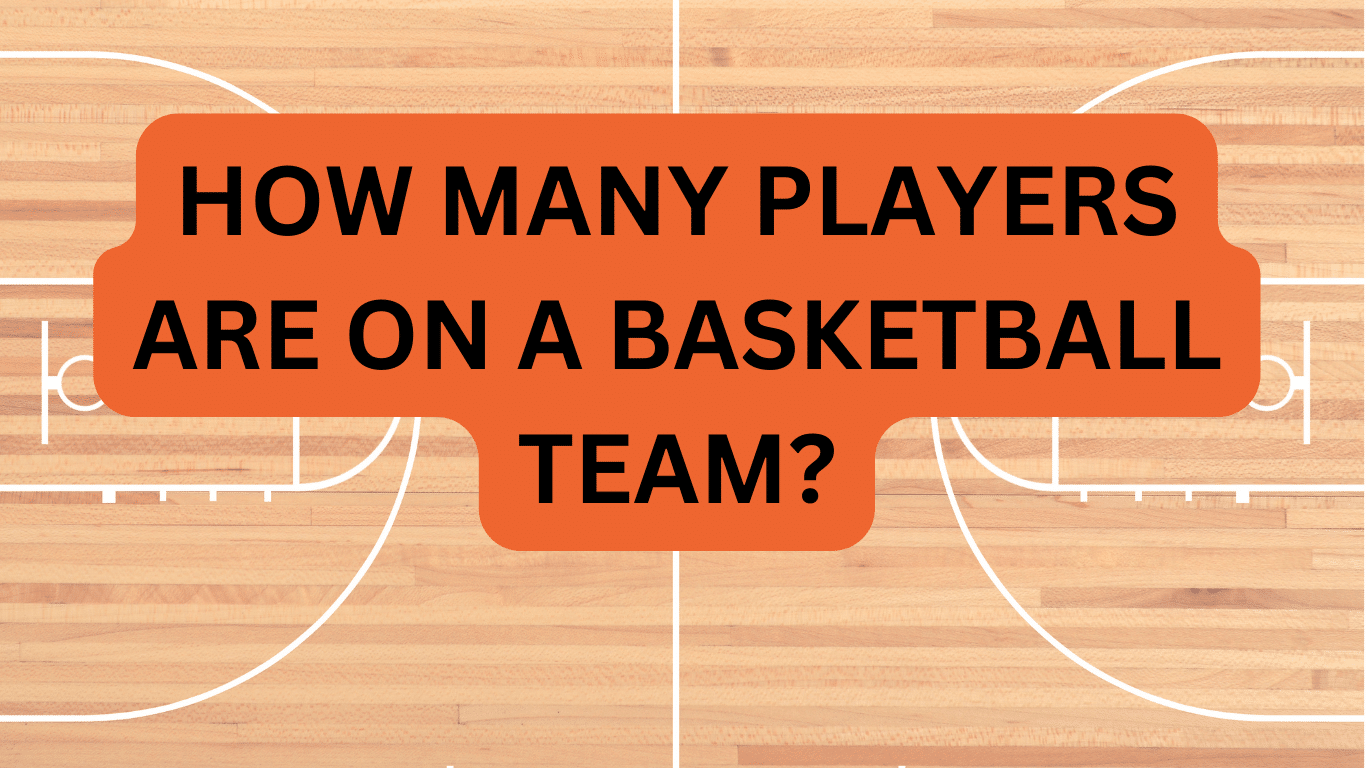Basketball is a popular sport that is enjoyed by millions of people around the world. One of the fundamental aspects of basketball is the team composition. A basketball team is made up of several players who work together to achieve their goals. But how many players are on a basketball team?
The answer to this question is straightforward. A basketball team consists of five players on the court at any given time. These five players work together to score points and defend their basket. However, a basketball team can have up to 12 players on the roster, including substitutes. This means that a team can have up to seven players on the bench waiting to be called into the game.
Knowing how many players are on a basketball team is essential for players, coaches, and fans alike. It is crucial for players to understand their role on the team and work together with their teammates to achieve success. Coaches must make strategic decisions about who to put on the court and when. Fans must understand the team composition to follow the game and cheer on their favorite players. Overall, understanding the number of players on a basketball team is critical for anyone involved in the sport.
Basics of Basketball
About the Game
Basketball is a popular sport played worldwide. It is a fast-paced game that requires players to be quick, agile, and have excellent hand-eye coordination. The objective of the game is to shoot the ball through the opponent’s basket while preventing the other team from scoring.
The game is played on a rectangular court with two baskets placed at opposite ends. The court is divided into two halves, with each team defending their own basket. The team with the most points at the end of the game wins.
Basketball games are played in four quarters, each lasting 12 minutes in the professional leagues. In college and high school games, quarters usually last 8 minutes. There is a halftime break after the second quarter, which lasts for 15 minutes.
Team Composition
A basketball team consists of five players on the court and several substitutes on the bench. The five players on the court are typically divided into two guards, two forwards, and one center.
Each player has a specific role to play on the team. Guards are responsible for bringing the ball up the court and initiating the offense. Forwards are typically taller and are responsible for scoring and rebounding. The center is usually the tallest player on the team and is responsible for defending the basket and rebounding.
The table below shows the typical height range and responsibilities for each position:
| Position | Height Range | Responsibilities |
|---|---|---|
| Point Guard | 5’9″ – 6’4″ | Ball handling, passing, and shooting |
| Shooting Guard | 6’0″ – 6’6″ | Scoring, ball handling, and shooting |
| Small Forward | 6’4″ – 6’9″ | Scoring, rebounding, and defending |
| Power Forward | 6’7″ – 6’10” | Rebounding, scoring, and defending |
| Center | 6’10” – 7’2″ | Defending, rebounding, and scoring near the basket |
In addition to the five players on the court, basketball teams typically have several substitutes on the bench. These substitutes can be brought into the game to replace tired or injured players or to adjust the team’s strategy.
Overall, basketball is an exciting and challenging sport that requires teamwork, skill, and athleticism.
Understanding Player Positions
Basketball is a game that requires a team effort to be successful. Each player on the team has a specific role to play, and understanding these roles is crucial to the team’s success. In this section, we will discuss the different player positions in basketball.
Guard Positions
The guard positions in basketball are usually the smallest players on the team. They are responsible for bringing the ball up the court and setting up the offense. Guards are also typically the best ball handlers and passers on the team. There are two types of guard positions: point guard and shooting guard.
The point guard is usually the team’s primary ball handler and playmaker. They are responsible for setting up the offense and getting the ball to the right players at the right time. The shooting guard, on the other hand, is typically the team’s best scorer. They are responsible for shooting the ball and scoring points.
Forward Positions
The forward positions in basketball are usually taller than guards but shorter than centers. They are responsible for both scoring and rebounding. There are two types of forward positions: small forward and power forward.
The small forward is usually the most versatile player on the team. They are responsible for scoring points, rebounding, and playing defense. The power forward, on the other hand, is typically the team’s best rebounder and post player. They are responsible for getting rebounds and scoring points in the paint.
Center Position
The center position in basketball is usually the tallest player on the team. They are responsible for playing defense, blocking shots, and getting rebounds. Centers are also responsible for scoring points in the paint. In some cases, the center may also be responsible for setting screens and running pick and rolls.
In conclusion, understanding the different player positions in basketball is crucial to the team’s success. Each player has a specific role to play, and knowing these roles will help the team work together more effectively.
Player Substitutions
Basketball teams are allowed to make substitutions during the game, which is a key aspect of the sport. Substitutions allow teams to replace tired or injured players, adjust their lineup to match their opponent’s strengths and weaknesses, or simply give bench players a chance to contribute to the game.
In professional basketball, teams are allowed to make a maximum of 12 substitutions during the game. In college basketball, the rules are slightly different, with teams allowed to make up to five substitutions per player per game. However, teams are also allowed to make unlimited substitutions during timeouts, halftime, and overtime periods.
When a substitution is made, the player leaving the court must first check in with the scorer’s table and wait for the referee’s signal before exiting the court. The substitute player must also check in with the scorer’s table before entering the court. Failure to do so can result in a technical foul and a loss of possession for the offending team.
Coaches often use substitutions strategically, making adjustments based on the score, the opponent’s lineup, and the game situation. For example, a coach may substitute a defensive specialist to guard an opposing player who is scoring at will, or bring in a three-point shooter to help close the gap in a close game.
Overall, player substitutions are an important part of basketball strategy, allowing coaches to make adjustments and keep their players fresh and focused throughout the game.
Size of Basketball Teams Globally
Basketball is a popular sport played worldwide, with different team sizes depending on the level of play. In this section, we will explore the size of basketball teams globally, including professional leagues, college basketball, and high school basketball.
Professional Leagues
Professional basketball leagues, such as the NBA, typically consist of 12 to 15 players on a team. This allows for sufficient depth and specialization, with players filling specific roles such as point guard, shooting guard, small forward, power forward, and center. Additionally, teams may have a few reserve players who are not active for each game but can be called upon in case of injury or other circumstances.
College Basketball
College basketball teams usually have slightly larger rosters than professional teams, with 12 to 20 players on a team. This is partly due to the fact that college teams need to prepare for a longer season, including non-conference games, conference games, and postseason tournaments. The larger roster also allows for more flexibility in practice and game situations, as well as the ability to redshirt players who may need additional time to develop.
High School Basketball
High school basketball teams typically have smaller rosters than college and professional teams, with 10 to 15 players on a team. This is partly due to the fact that high school teams usually play fewer games than college and professional teams, and also because of budget and facility constraints. However, high school teams still require a mix of players with different skill sets and positions, including guards, forwards, and centers.
In summary, the size of basketball teams varies depending on the level of play, with professional leagues having the smallest rosters and high school teams having the largest. Regardless of the size of the team, basketball requires a combination of individual skill and teamwork to be successful.
Variations in Team Sizes
Basketball is a sport that can be played with different team sizes, depending on the level of competition and the type of game being played. In this section, we will explore two variations in team sizes: street basketball and three-on-three basketball.
Street Basketball
Street basketball is a popular form of the game that is played on outdoor courts in urban areas. It is often played with fewer players than the traditional five-on-five game. Street basketball games can be played with as few as two players or as many as four players. The most common team size for street basketball is three players.
Street basketball games are often played to 21 points or another predetermined score. The games are typically fast-paced and require a high level of skill and athleticism.
Three-on-Three Basketball
Three-on-three basketball is a popular variation of the game that is played at the amateur and professional levels. It is played with three players on each team and is often played on a half-court.
Three-on-three basketball has become a popular sport in recent years, with the introduction of the FIBA 3×3 World Cup and the inclusion of three-on-three basketball in the 2020 Tokyo Olympics. The game is played to 21 points or another predetermined score.
In conclusion, basketball can be played with different team sizes, depending on the type of game being played. Street basketball is often played with three players, while three-on-three basketball is played with three players on each team.







